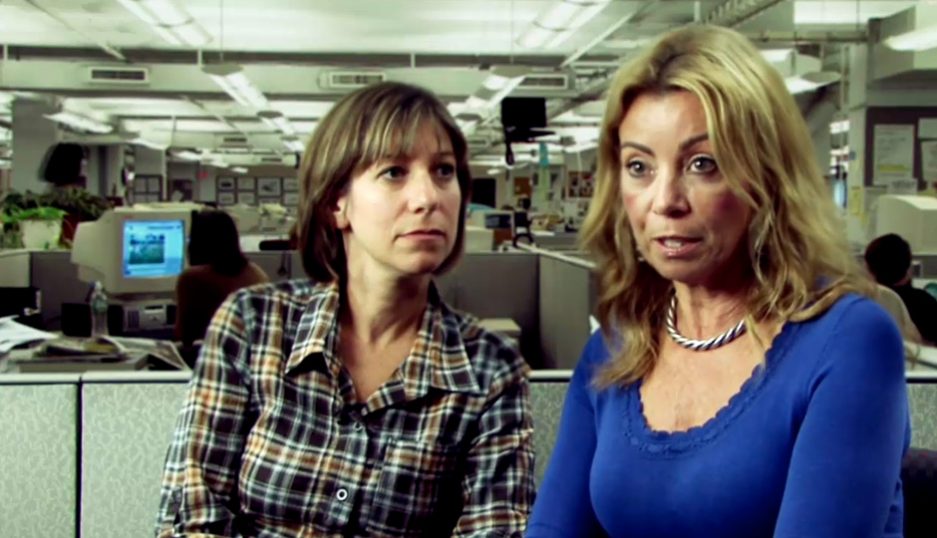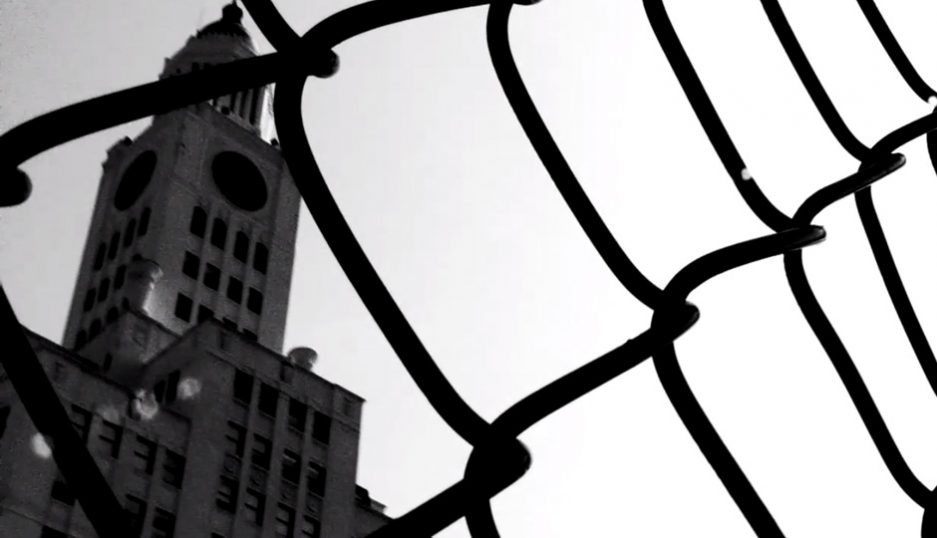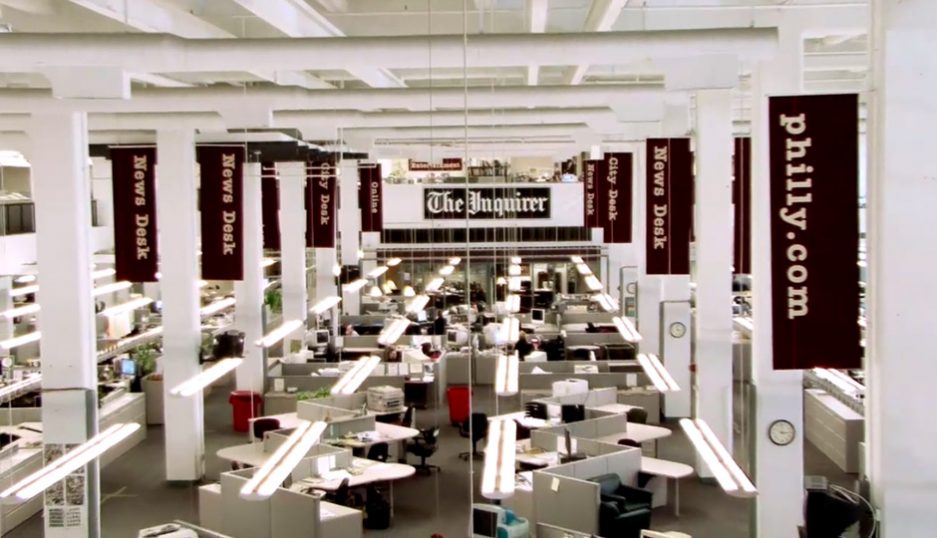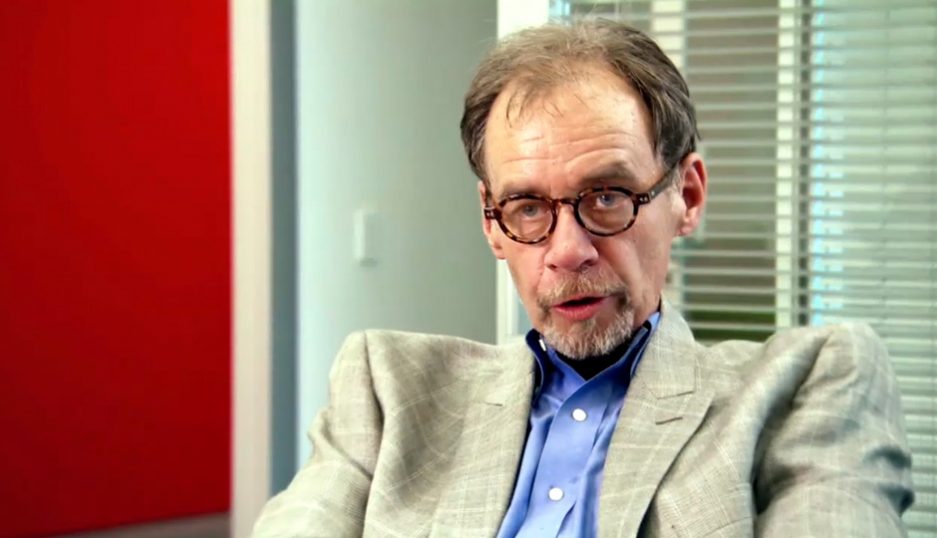Black & White and Dead All Over? The “Darth Vader of Journalism” Strikes Back










In the fall of 2007, I was asked to interview Norman Mailer at a Free Library book event. At the cocktail reception beforehand, I found myself huddled in conversation with the legendary author. He was, by now, a kindly old man, unsteady on his feet. I peppered Mailer with questions: We talked about the march on the Pentagon in 1967 that was the setting of his greatest book, Armies of The Night, a stinging critique of establishment journalism. He was charming and self-deprecating. There was little of that rebellious, pugnacious spirit that had come to be his calling card. Until, that is, we segued to the subject of newspapers, which were increasingly imperiled. In the Sixties, Mailer had founded the Village Voice because something new was desperately needed. He wanted to know: Where was today’s journalistic disruption?
“They get what they deserve,” he spat out. “When was the last time you read something in a newspaper — even in the vaunted New York Times — that made you think? America is allergic to ideas, and that’s not unrelated to the principal failing of journalism: It’s as if they don’t see it as their mission to publish anything interesting or stimulating or challenging. So I say, let them go. Good riddance.”
I didn’t say it then — what, I want to debate Norman Mailer? – but I didn’t share Mailer’s dark view. On balance, I felt, newspapers still played a vital role, both as watchdog and as shared civic meeting place. A little over three years later, I was offered the editorship of the Philadelphia Daily News, a once-proud city tabloid that had fallen on hard times. “How’d you like to reinvent the major metro daily?” publisher Greg Osberg asked when he offered me the job.
I was instantly reminded of the comments of Mailer, who had passed away shortly after our conversation. Was it possible? Could one do as Mailer counseled: Take an entity that was, in the instantaneous digital age, still married to the stenography of who said what in yesterday’s public fights and, instead, produce something that went beyond the daily drama? Something not only deeply reported, but also entertaining — and full of ideas about how to move our city forward?
Eyes wide-open, I decided to try. I gave it 18 months — the length of my contract — and came away feeling Mailer was closer to right than I’d thought on that 2007 night. In fact, I thought of Mailer’s comments often during my tenure at the helm of the Daily News, as seemingly every innovation we floated was met by a chorus of “but we’ve never done that before” howls from career journalists who would champion change in their own writing but fight it bitterly when it pertained to them in their workplace.
More recently, Mailer’s comments came back to me upon the release of the documentary Black & White And Dead All Over: A Film About the End of American Newspapers. The film aired on WHYY last Sunday and will be rebroadcast tonight, February 24, at 10 p.m. It’s a love letter to a certain type of investigative reporting, and it uses as its case study the newsrooms of both Philadelphia newspapers, the Inquirer and Daily News. Wendy Ruderman and Barbara Laker, the investigative reporting team that won the Pulitzer Prize for the Daily News in 2010, are held up as heroic endangered species — and corporate owners as their nemeses. But there I am, too, lumped in with the nefarious men in suits: with my emphasis on producing covers that readers might actually want to buy and my insistence that we deeply report on things other than the cop scandal of the day, I seem to be singled out as the bogeyman most contributing to the death of substantive journalism. “Who knew?” One friend chided me. “You’re the Darth Vader of journalism!” Perhaps not surprisingly, I prefer to be called a reformer, in an industry desperately in need of new ideas. Ah, yes, ideas: As if to illustrate Mailer’s long-ago point, the film quite unwittingly illustrates the dearth of them in journalism, to the industry’s own peril.
***
Black & White and Dead All Over was produced by Lenny Feinberg, a suburban Philadelphia businessman who last produced 2009’s Art Of The Steal, a compelling look at the controversial moving of the legendary Barnes art collection. This time around, however, Feinberg is without his partner, Don Argott, (the two had a falling-out after the success of Art), and it quickly becomes apparent that Argott was the filmmaker and storyteller of the two. In Black & White, Feinberg summarizes why newspapers are facing extinction, and the litany of reasons are by-now all too familiar — the Internet, Craigslist, an industry-wide rush to offer content for free on the web in the ’90s — and over-simplified. Mailer would say the narrative lacks gravitas. For example, Feinberg gives ample room for foul-mouthed Daily News columnist Stu Bykofsky to deride publishers for posting newspaper content for free on the web, a common complaint in newsrooms, and one I myself have made.
But the truth is, the issue is more nuanced than Bykofsky and Feinberg would have us believe — as is the case with so much of what Black & White posits. The rush to publish content for free on the web was not counter to what had come before: The print business model that Feinberg and Bykofsky pine for, which grew the newspaper industry from a $20 billion to a $60 billion business between 1960 and 2000. (It took all of the next 10 years to revert back to a $20 billion industry.) In both that golden age of growth and the Internet-dominated age of contraction that followed, the newspaper industry essentially clung to a one-revenue stream philosophy: advertising. Papers were sold to consumers for next to nothing; nearly all revenue was garnered by relying on advertising dollars. It’s not that publishers deviated from the model that led them to prosperity when, via the Internet, disruption struck. It’s that they were too loyal to an old idea whose time had come and gone. The sin, in other words, was a failure to innovate and change with the times.
Time and again throughout Black & White, Feinberg thinks he’s revealing one thing, when he’s actually modeling industry-wide denial and allergy to change. When times were good, publishers and journalists were stuck in place due to hubris. When things got bad, they were paralyzed due to fear and a type of collective anger. When the economy tanked, advertisers started to realize what would happen if they didn’t advertise (nothing!), and that placing ads on websites was not akin to ads in a paper due to the new medium’s lack of contiguousness. Advertisers also saw that readers were leaving newspapers in droves, something Feinberg doesn’t delve deeply into at all: The market was speaking, and it was telling editors and reporters that it didn’t like what they were producing.
I said as much to the Daily News staff on the day in 2011 that I first addressed them. I told them that 25 years ago, their circulation was 280,000. Eighteen years ago: 195,000. Two years ago: 97,000. Now: 80,000 and plummeting daily. No one had shared with the staff the incontrovertible metrics that spoke to the ongoing rejection of their product. That couldn’t just be about the Internet; clearly, something they were doing wasn’t connecting with their fellow citizens. I asked for them to be “introspective” about what they do, and to join me in remaking the newsroom into “a laboratory of journalistic experimentation.”
In Black & White, Ruderman quite unintentionally advertises herself as the poster child for institutional denial when she voices the type of resistance my calls for change ran up against: “Larry Platt kept saying the problem was the content,” she says. “And we tried things [his] way and it didn’t work.”
Of course, ultimately, not enough new was tried, owing to the type of knee-jerk opposition expressed by Ruderman. There’s a big difference between grudging compliance and real buy-in, after all. Despite my call for introspection, I was struck by how seldom the newsroom conversation centered around the actual product we were producing; it was as if everyone — publisher, editors, reporters — started from the perspective that what we’d been producing was just fine, despite the overwhelmingly clear verdict readers had been rendering for years. To be clear, what I called for in response wasn’t fluff, as Black & White would simplistically have you believe; it was actually more in-depth enterprise reporting, (we broke the newsroom up into enterprise groups charged with unearthing compelling, deeply reported stories), fueled by journalistic activism, a digital-first mindset and point of view, all of it sold through the use of clever, provocative packaging. (One of many manifestos to the staff laying this out can be found here). Feinberg unwittingly illustrates this, showing a series of irreverent covers that he presents in order to convey a lack of seriousness — without noting the content that they sold, which included enterprised pieces about the governor and embattled schools chief: accountability journalism in the proud, muckraking tradition.
But it is true that I didn’t think we needed more crime blotter coverage or cop scandals. Violent crime in Philly was starting to come down; reading the Daily News, however, you’d get the impression that the city was a war zone and that the cops were indistinguishable from the criminals. The best of the work of Ruderman and Laker was laudable; but when all you do is try and unearth scandal, you’re complicit in making the average citizen feel helpless about his or her city. Increasingly, the Daily News was feeling like an anti-cop newspaper. I wanted to turn some of our reporting firepower to other areas, like politics and education. And that was met by reporters like Ruderman complaining, as she does in Black & White, about never having been assigned stories before.
If Black & White had been an intellectually honest attempt to wrestle with the challenge of finding new content strategies for new times, it would have conceded the need to rethink the philosophical underpinnings of journalism itself. After all, the last time the fundamental precepts of journalism underwent significant revision was in the 1800s, when the notion of objectivity took hold, a change that was driven by advertiser wishes rather than any desire to serve the citizen any better.
Most of all, instead of a reflexive championing of “investigative reporting,” the film could have held the term, and the effects of its practice, up to inspection. The most telling moment of Black & White comes when Bob Woodward says, “Every morning I wake up and say to myself, ‘What lies are the bastards going to tell today?’” Feinberg means this to be heroic: Woodward, and a whole endangered generation of journalists, as crusading truth-tellers.
In fact, I think it’s emblematic of what I call the Watergate Over-Correction. A generation of journalists came of age thinking journalism was about unmasking liars and crooks and cheats in our public life. I was one of them. But then I started to wonder if we in the media elite weren’t unwittingly conspiring with the political class to elicit in the average reader a paralyzing sense of cynicism.
In a 1903 magazine article, journalist Lincoln Steffens famously called Philadelphia “corrupt and contented.” Back then, as now, Philly was a one-party machine town. In the piece, a local ward leader explains to Steffens why our city so rapidly followed each stunning act of public malfeasance with yet more public malfeasance: “We reasoned that if we [did exactly as we wanted] fast enough, one-two-three – one after the other – the papers couldn’t handle them all, and the public would be stunned – and give up… We know that public despair is possible and that that is good politics.”
How things change, huh? In the most recent citywide election in the fifth largest city in America, fully 11 percent of registered voters showed up at the polls. That’s not just an indictment of our political leaders and the electorate. It’s also a commentary on the role journalism has played in numbing a citizenry into apathy. The opinion polls that show journalists are held in lower regard than Congress and used car salesmen have led me to a question one wishes Feinberg had considered: What would it take for the press to still be an all-important watchdog and a force for civic good?
Ironically, at the same moment that Feinberg’s film pines for many of the philosophies that helped get journalism into its current state, I’ve been incubating a project that seeks to address that very question. Taking our cue from the success of texastribune.org, a group of Philadelphia disrupters (ranging from philanthropist and attorney Ajay Raju to entrepreneur Maureen Ferguson, and including advisers like Buzz Bissinger, Jeremy Nowak, Richard Vague and Pat Croce, not to mention a handful of dynamic aspiring leaders) have come up with The Philadelphia Citizen, a non-profit, non-partisan media organization that, through public events and deeply reported journalism, will emphasize solutions that can move our region forward. It will identify our innovators, call out those who stand in the way of progress, and shine a light on a next generation of leadership — all while giving Philadelphians the interactive tools they need to become more involved, engaged citizens.
Black & White unintentionally proves that it’s time for some new ideas in journalism. How about rethinking the role of the Gatekeeper in the new media age? The editorial seer that Feinberg and Ruderman mythologize — an all-knowing lecturer from on-high — has already given way. The new Gatekeeper should be more of a tour guide or facilitator, someone who co-curates compelling content with an active, engaged audience. How about a commitment to non-partisan activism? Imagine: an in-house social action team, working hand-in-hand with reporters, providing users with a blueprint for how to exercise their civic voice on any given issue. (Click here to sign an online petition; click here to directly email your elected representative.) Journalism, after all, is like clean air and clean water — a public good; so why not treat it as a means to the end of robust civic engagement?
Look, I don’t know if the still-evolving notion of The Citizen will happen. (To do it right, we need to raise a lot of money.) But our due diligence these last months has only underscored that something new is desperately needed, and I mention it here as stark contrast to the same-old, same-old we get from Feinberg in Black & White, a polemic that, in effect, endorses a failing status quo and perpetuates distracting newsroom finger-pointing.
Newspapers, for all their faults, are still important, and I envision The Citizen as more supplement than replacement. But the fact is I’ve run two major media institutions in the fifth biggest city in America, and — sad to say — I feel like I have yet to consistently do the kind of work I got into journalism to do, the kind of work my city and local democracy needs. That is, no doubt, partly my own fault — perhaps even primarily so. I can think of many missed opportunities where I should have been bolder and braver. But, as Norman Mailer pointed out in 1967 and again on that fall night 40 years later, it’s also because there is something in journalism that resists the type of evolution that is born of introspection. The result is too often run-of-the-mill stenography or the most simplistic type of storytelling. Think of it: When’s the last time you read something in a newspaper and said to yourself, “Hmmm. I’ve never thought of that before”?
Sadly, watching Feinberg’s film mirrored that experience.
Larry Platt is a former editor of Philadelphia magazine.
Watch the film’s trailer:


